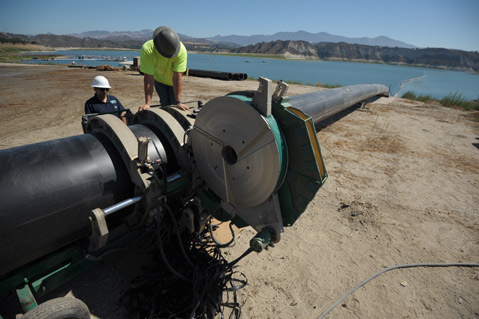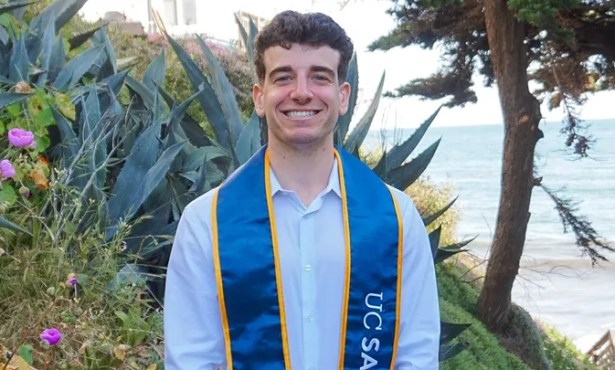Santa Barbara Paying More for Less Water
State Agency Makes Big Error and Puts Central Coast on the Hook for $9.3 Million

Three weeks ago, Ray Stokes of the Central Coast Water Agency (CCWA) was informed that his outfit had been undercharged anywhere from $4 million to $7 million by the Department of Water Resources for shipping negligible quantities of state water into Santa Barbara County this past year. This week, Stokes — now celebrating his first year at the helm of the county water agency responsible for distributing that dribble of state water to households from Santa Maria to Carpinteria — would discover how badly the Department of Water Resources had underestimated the error.
It turns out that Stokes and CCWA are on the hook for $9.3 million, half payable by the end of this year, the rest by next July. The Department of Resources apparently forgot to factor in the cost of pay raises and hiring an additional 125 new employees into the bills that CCWA just paid off. Statewide, the cost of this omission came to $183 million. It’s not lost on Stokes that this year — with California in the grip of one of the most ferocious droughts on record — CCWA has gotten less than 5 percent of the state water for which its customers are collectively charged $58 million a year.
Stokes is quick to point out he championed the pay raises and the new employees hired — they were necessary to make the system reliable — but he’s not convinced anyone’s getting the real story. Likewise, he remains flabbergasted so vast an enterprise as the Department of Water Resources would have no reserves to help cushion such eventualities.
To put this fiscal whoopee cushion in perspective, South Coast water agencies — primarily Montecito and Santa Barbara — have already spent or committed to spending $5.6 million to buy 6,900 acre-feet of supplemental water from outside water districts to get through this year and the next. With rueful humor, Stokes noted he’s currently negotiating with a water agency in the Mojave Desert for an additional 1,000 acre-feet.
With the entire state now a drought zone, the good news is that South Coast water customers sucked 700 acre-feet less water out of Lake Cachuma this June than they did the year before. That’s positive because Lake Cachuma — which supplies one-half the water needs of South Coast customers — has gotten low enough to trigger a 55 percent cutback in normal water deliveries.
Tom Fayram, water czar for Santa Barbara County, expressed some skepticism at how much of this savings was achieved through voluntary conservation efforts. Since February, South Coast customers have been exhorted to cut water consumption by 20 percent. Montecito has dramatically jacked up water rates for especially thirsty households and seen a dramatic drop in consumption. The City of Santa Barbara has yet to see any real conservation savings, but its new water rates — designed to punish water extravagance — just went into effect July 1.
At this rate, it’s only a matter of months before Lake Cachuma drops below the dam’s lowest intake portals. That means the water will have to be pumped up — at great cost, mechanical effort, and electrical energy — to get into the intake portals, through the tunnel, and into customers’ homes. This enterprise will cost roughly $6 million to build and operate, but according to Fayram, work is underway, and the system will be in place well before it’s absolutely needed.
Meanwhile, the City of Santa Barbara is pursuing plans to reactivate its long mothballed desalination plant if it doesn’t rain this winter. Although the city’s plant — operated briefly in 1991 — is decidedly old school where environmental protection for sea life is concerned, it does not appear likely the California Coastal Commission or the California Water Resources Control Board will object vigorously. Nor does it seem the state water board’s top-to-bottom review of desalination plants — just released last week in response to 15 proposed facilities along the coast — poses an insurmountable hurdle to reactivation.
According to state water board officials, Santa Barbara’s plant can probably win approval so long as it mitigates its deadly impacts on microscopic sea life by restoring wetlands or habitat elsewhere and comes equipped with the most restrictive mesh screening to keep tiny sea creatures from getting sucked into the expensive — $30 million to rebuild, another $5 million to operate annually — water-making machine. None of this will be necessary should this winter’s predicted El Niño deliver a heavy storm or two. As to the chances of that happening, CCWA’s Ray Stokes had only one word. “Hah!”



